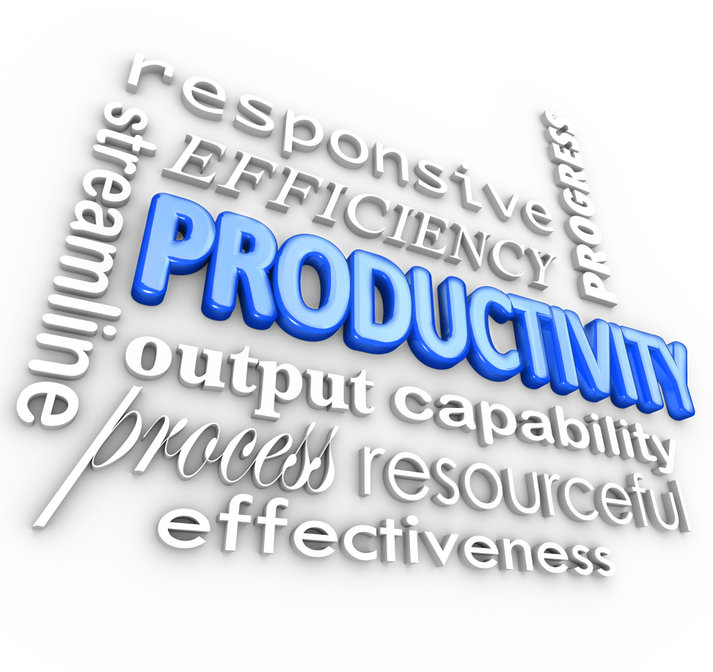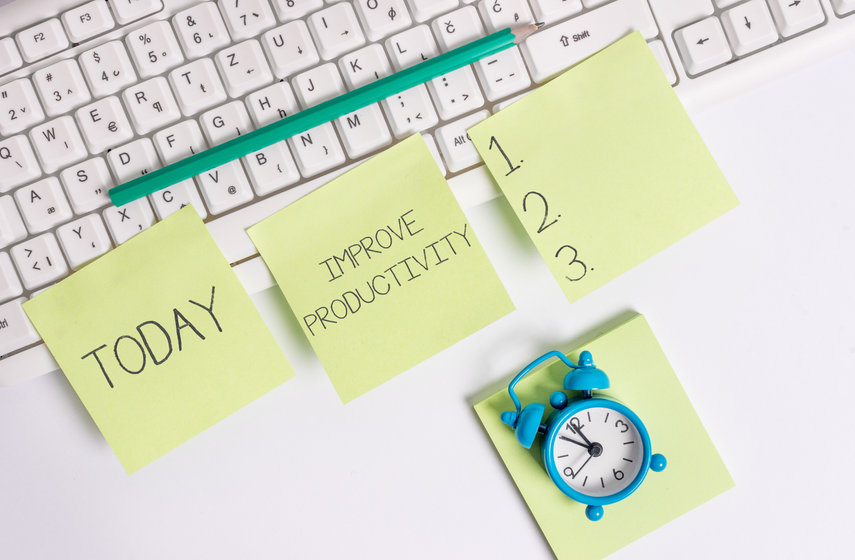8 Habits of Highly Productive Professionals

It may be tempting to think of highly productive people as robots or workaholics. But the truth is that we all have the same 24 hours on any given day. Highly productive people simply have a system for getting more done in the time they have. Here are the habits of professionals who effectively maximize productivity without sacrificing the quality of work or life.
1. Write down your goals to better prioritize and visualize outcomes.
Our measurement of productivity is typically based on our ability to accomplish a set of goals. Clearly identifying those goals from the start is a must. It might seem obvious but establishing goals with clearly defined objectives requires more than a general idea of the outcomes you hope to achieve. Get specific about what the ideal outcome looks like, and which tasks are required to accomplish it. From there, make a list that prioritizes the necessary tasks. Writing down goals is scientifically proven to activate the parts of your brain that can tackle the steps necessary to accomplish goals. Further, a tangible list boosts motivation, reduces stress, solidifies your commitment and provides a sense of accomplishment.
2. Use scheduling, organizational and accountability tools.
There are countless methods and tools available for keeping a schedule or maintaining individual and team accountability. Options include written agendas, in-office calendars, built-in or downloadable mobile applications, email reminders, online schedules and collaborative platforms for teams. Test which combination of these methods works for you and your team and commit to using it consistently. Setting deadlines can help create a system of self-accountability. The most effective accountability tool is the one you will use consistently.
3. Adopt proven productivity methods.
Experts have long sought to master productivity techniques that unlock the potential of different work styles and personality types. There are countless examples of popular methods, but here are some examples. In his book Getting Things Done, productivity expert David Allen suggests adopting “the two-minute rule” to battle procrastination. He asserts that most tasks on our to-do list will take only two minutes. Tackle those tasks first to boost a sense of accomplishment and motivation.
Time blocking is a popular scheduling technique that involves dividing your day into blocks of time, with each block dedicated to a specific task. For example, you could assign 15 minutes for email, 30 minutes for a team meeting, one hour to review a proposal, and 90 minutes to research and draft a blog. Proponents of the technique say it provides a roadmap for each day (and week) and prevents “context switching.” The “Don’t Repeat Yourself” technique (or DRY principle) was made famous by software programmers but can apply in any work setting. To save time, DRY users identify repetitive tasks and strive to eliminate repetition by using templates, apps and automation.
4. Avoid multitasking.
Earl K. Miller, a neuroscience professor at the Picower Institute for Learning and Memory at the Massachusetts Institute of Technology, studied multitasking at length, concluding that “multitasking is not humanly possible.” Switching back and forth between tasks is proven to put excess pressure on our “cognitive bandwidth,” causing our brains to work unnecessarily hard to accomplish simple tasks. While juggling multiple tasks can create the sense you’re accomplishing more, studies found multitasking reduces your productivity by 40 percent. To overcome the urge to multitask, eliminate distractions (yes, even your phones) and strive to focus on the most important tasks at the time of day when your attention and drive are at their peak.
5. Cultivate a work environment that stimulates your productivity.
In a time when many businesses have transitioned to partially or fully remote workplaces, it’s more important than ever to take steps to create a favorable work environment. Whether you’re at home, in the office or a combination of the two, seek to establish environments that encourage focus and stimulate creative thinking. Reduce distractions, keep your workspace organized and create an ergonomic and comfortable work area. Many workspace options come down to preference. For example, sit-to-stand desks have grown in popularity for workers who seek mobility but want to stay at their workstations. Background music, white noise or silence also can impact diverse workplaces in different ways. Be sure to test different environment decisions to identify what works for you.
6. Learn when to say no.
It’s a skill in and of itself to learn how much you can handle and when. A key to productivity is knowing when there’s too much on your plate. Whether this means delegating tasks to another team member, asking for help from colleagues or higher-ups or simply knowing when an event or task isn’t necessary, saying no can free up time for other priorities or a much-needed break.
7. Practice self-care and positivity.
Productivity isn’t just about checking items off the to-do list. Balance is crucial. Take regular breaks, exercise, practice mindfulness and eat well. These steps prioritize your well-being, which is the foundation to effectively handling responsibilities. With a fast-paced marketplace and ongoing challenges, it’s easy to forget to take care of yourself. This includes both your body and your mind. Seek ways to relax, practice positivity, make time for hobbies, socialize and enrich your personal life. This will create a healthy work-life balance and help you to be more focused and refreshed.
8. Stop measuring productivity solely on profit.
It’s been long discussed whether our society has an unhealthy obsession with productivity. Melissas Gregg of The Atlantic contends that in today’s work culture “productivity increasingly stands as the default measure of accomplishment. Rest and relaxation are optional affordances against the expectation that workers make profitable use of their time.” Profit and productivity go hand in hand but often are mistakenly considered synonymous. It’s vital that workers in every industry don’t solely measure their own success in terms of tasks that directly benefit profit. “Productive” can refer to revenue-generating projects, but it also can refer to learning something new, engaging meaningfully with a connection or taking the time to contemplate an idea. Not every productive task will have tangible effects, let alone result in profit. Consider productivity in all senses of the word and take stock of the many daily successes you achieve each day.
Perspective in Productivity

It’s vital to have tools and strategies in place to help organize and tackle the many activities we face daily in our personal and professional lives. However, it’s important to ask yourself whether you are putting those strategies into action. If you’re feeling stuck in the grind, overwhelmed or overly stressed, take a moment to assess what’s working about your daily process and what might need a change. Seek to strike a balance in productivity that aligns with your goals, values and well-being.
